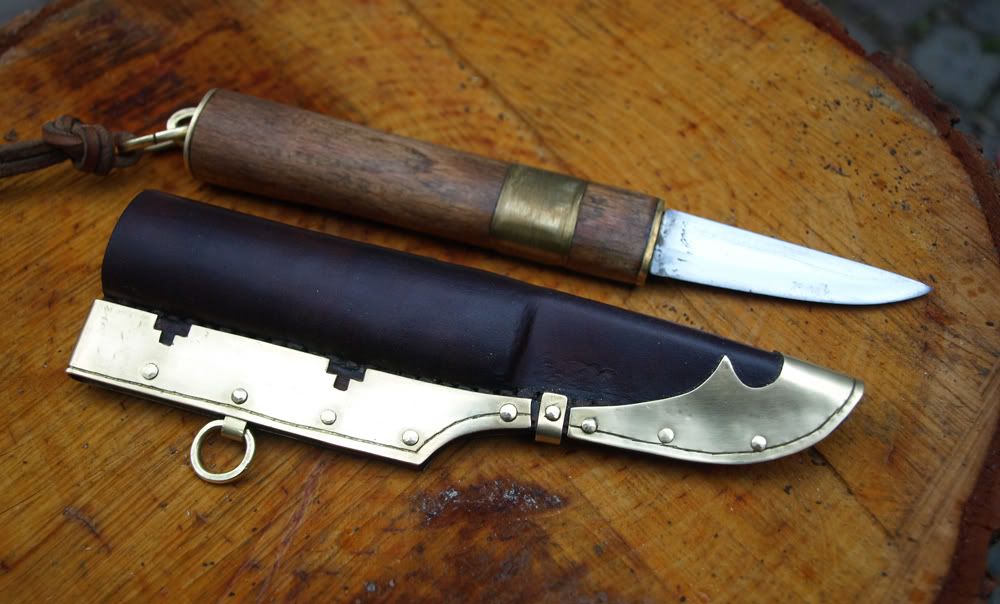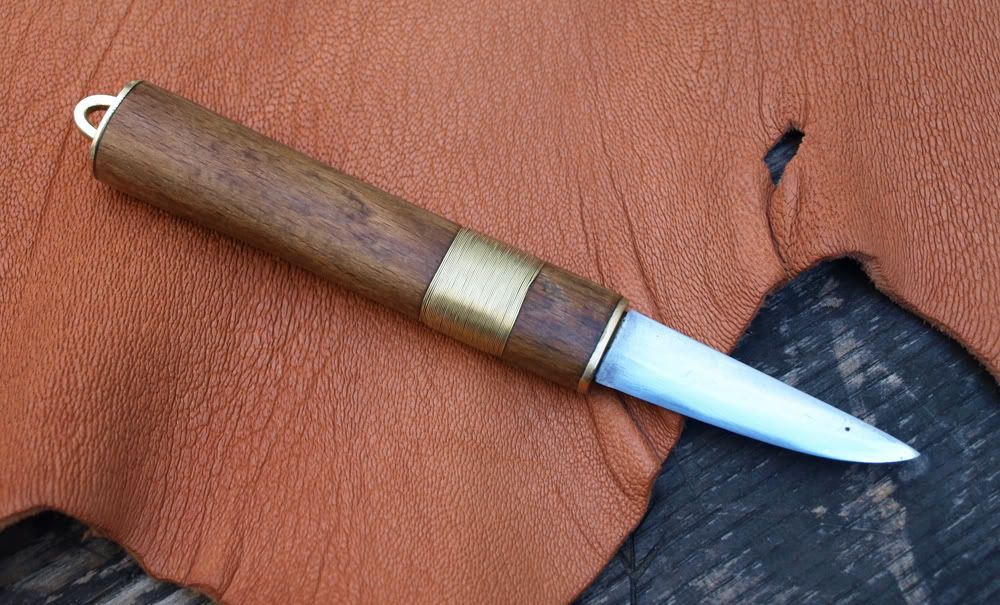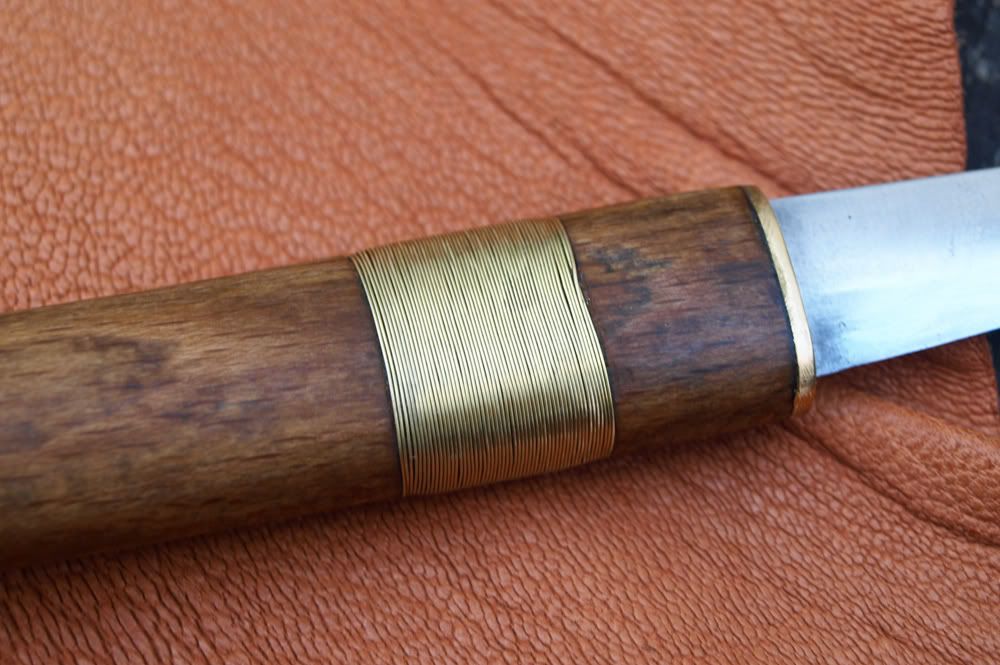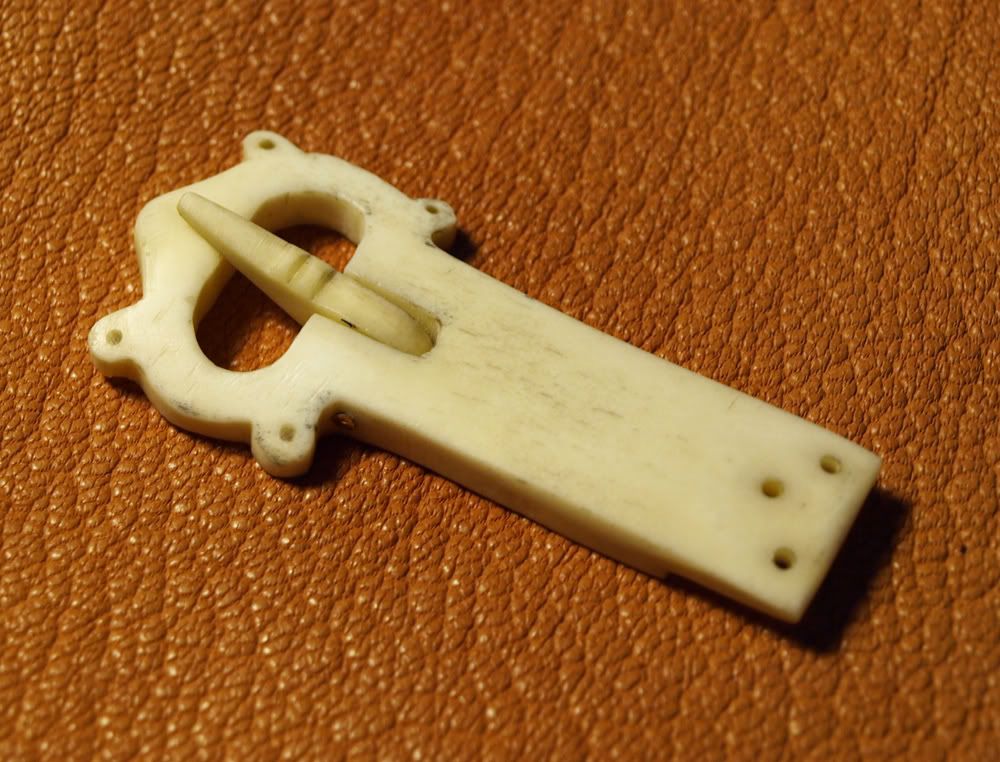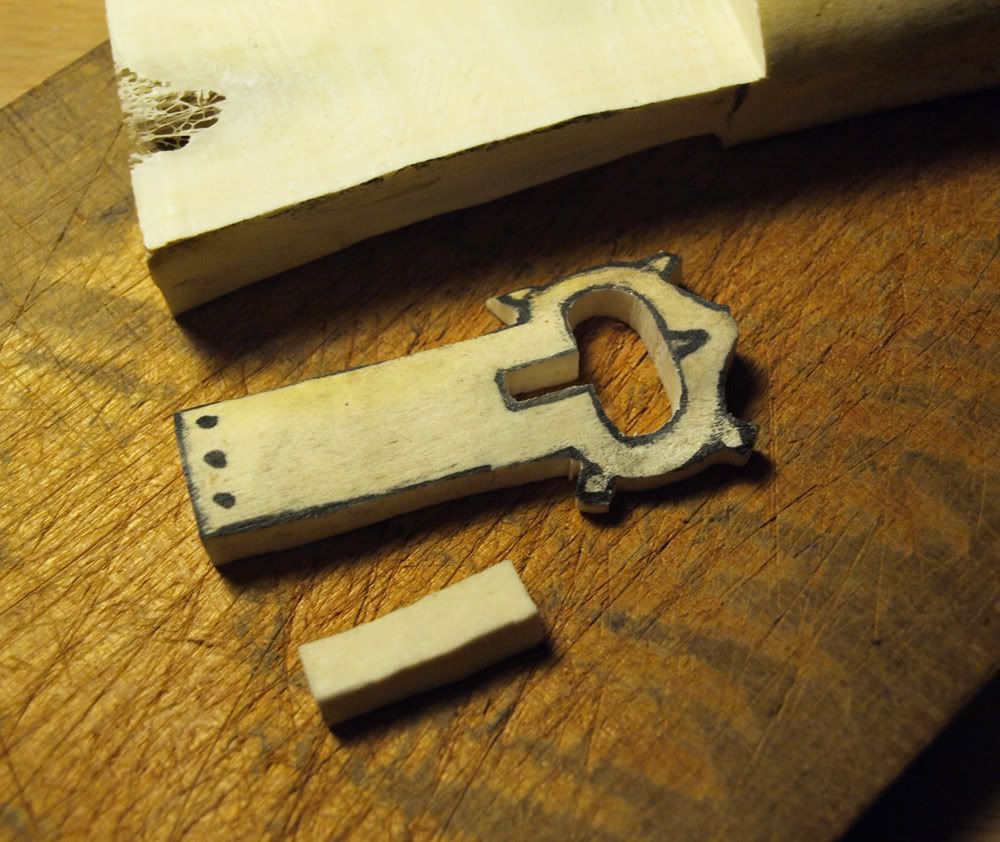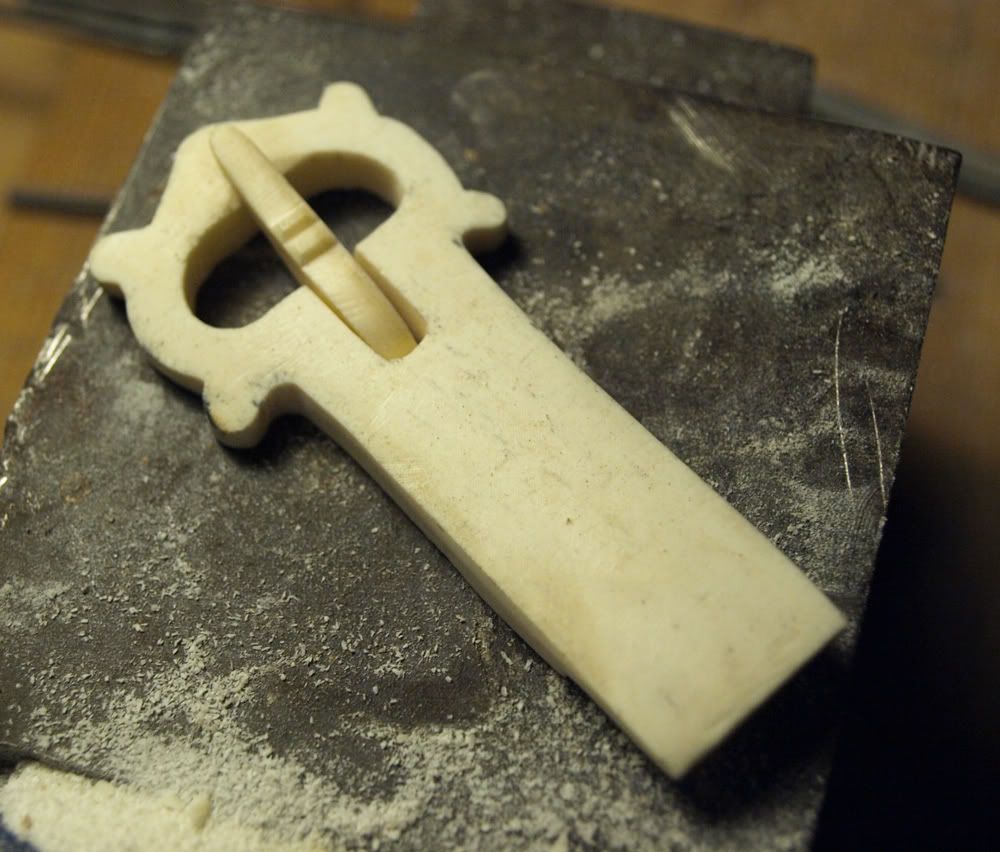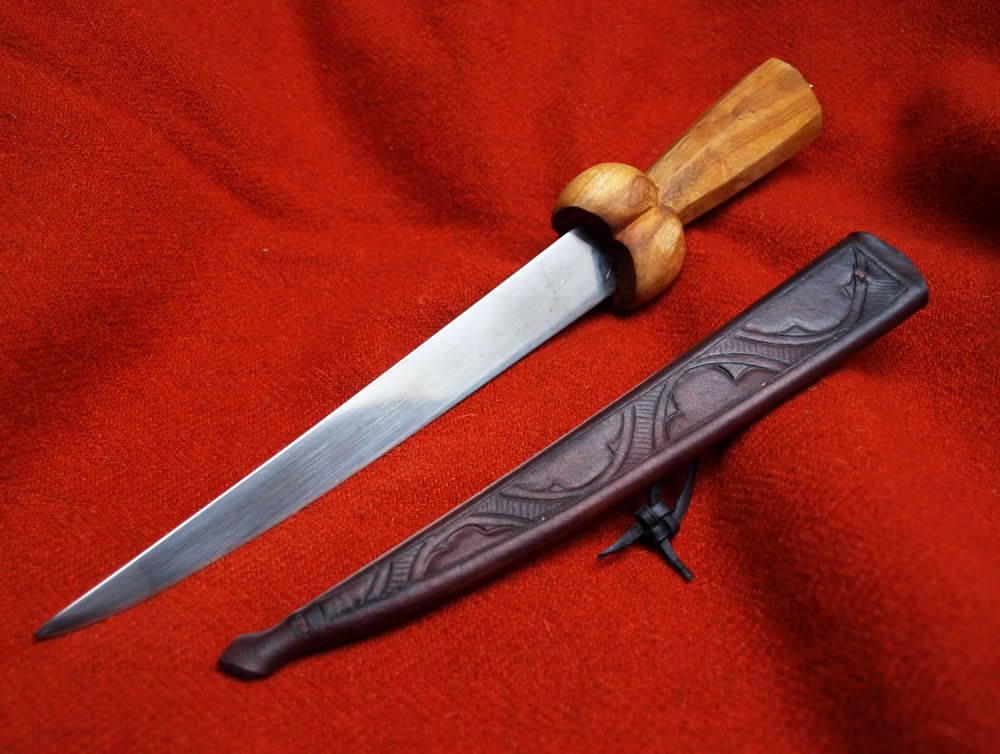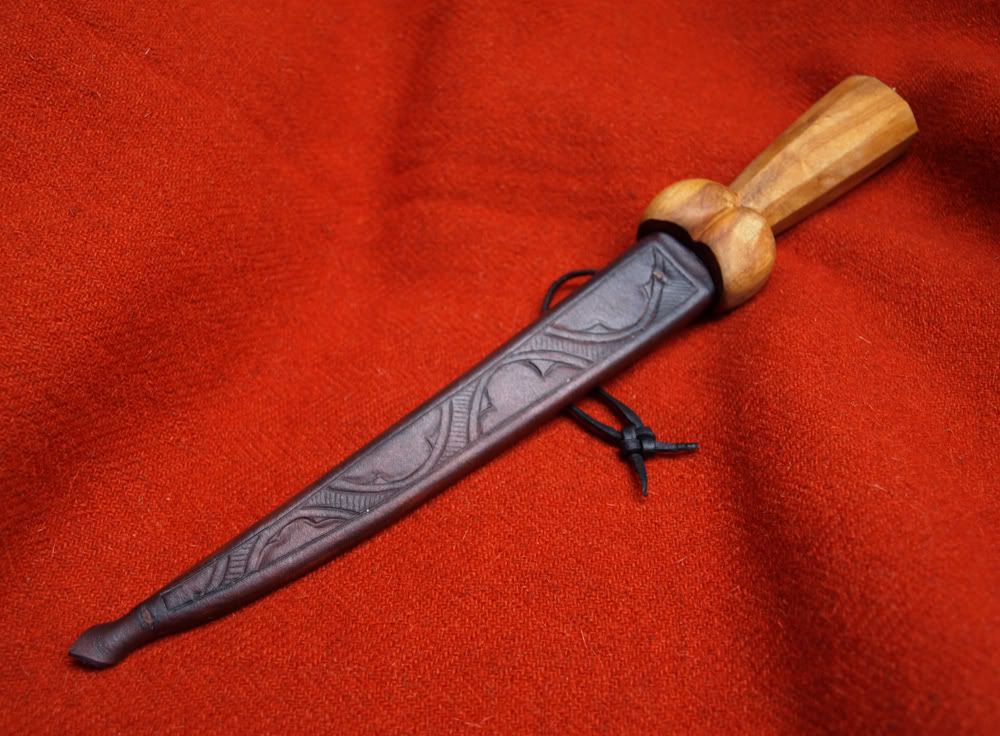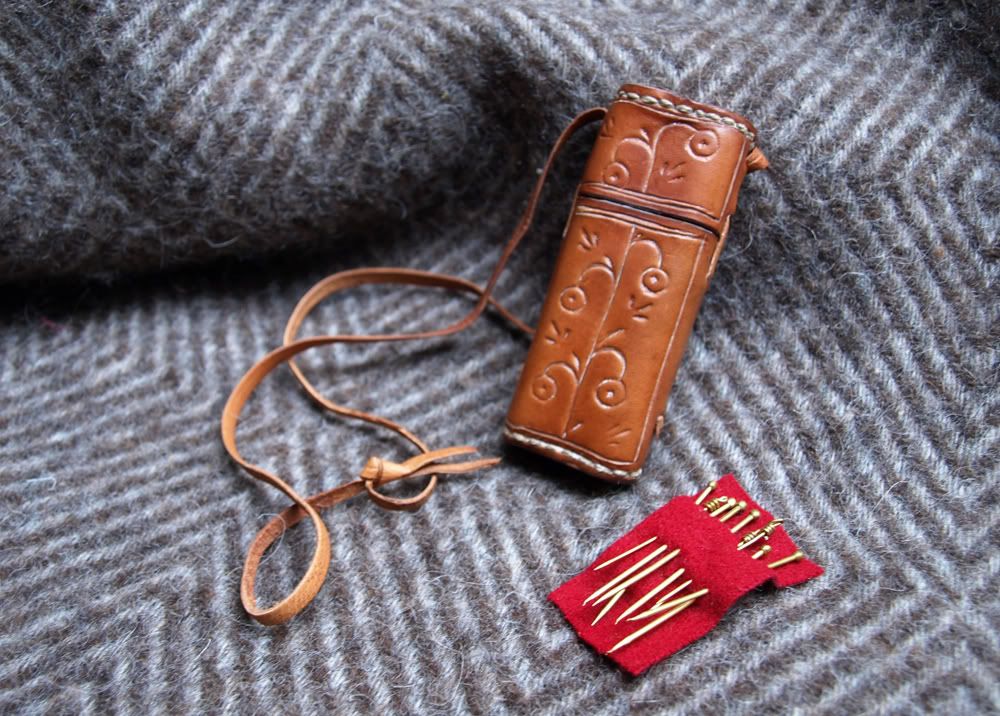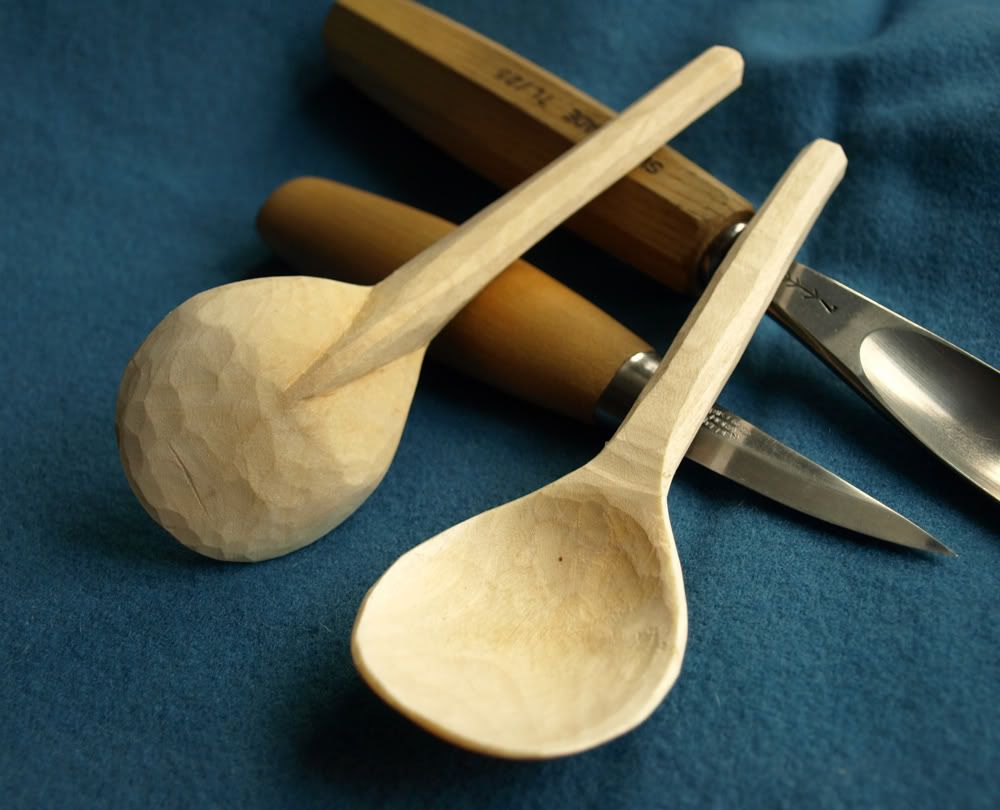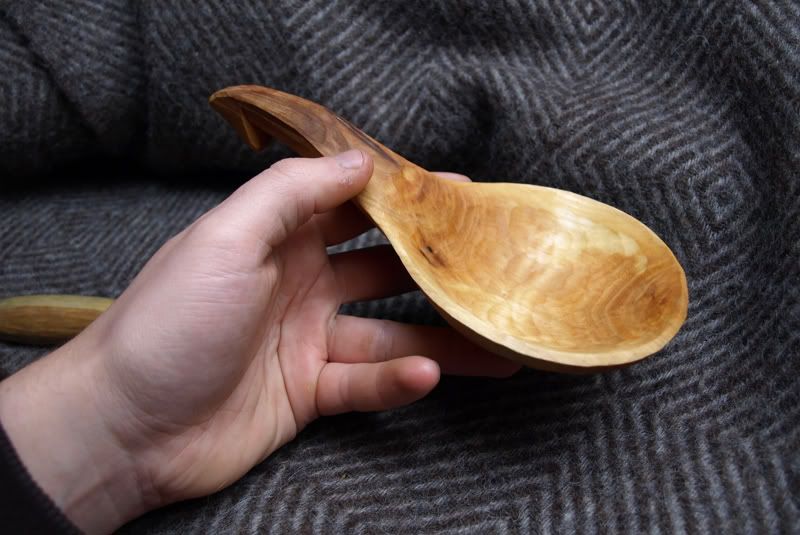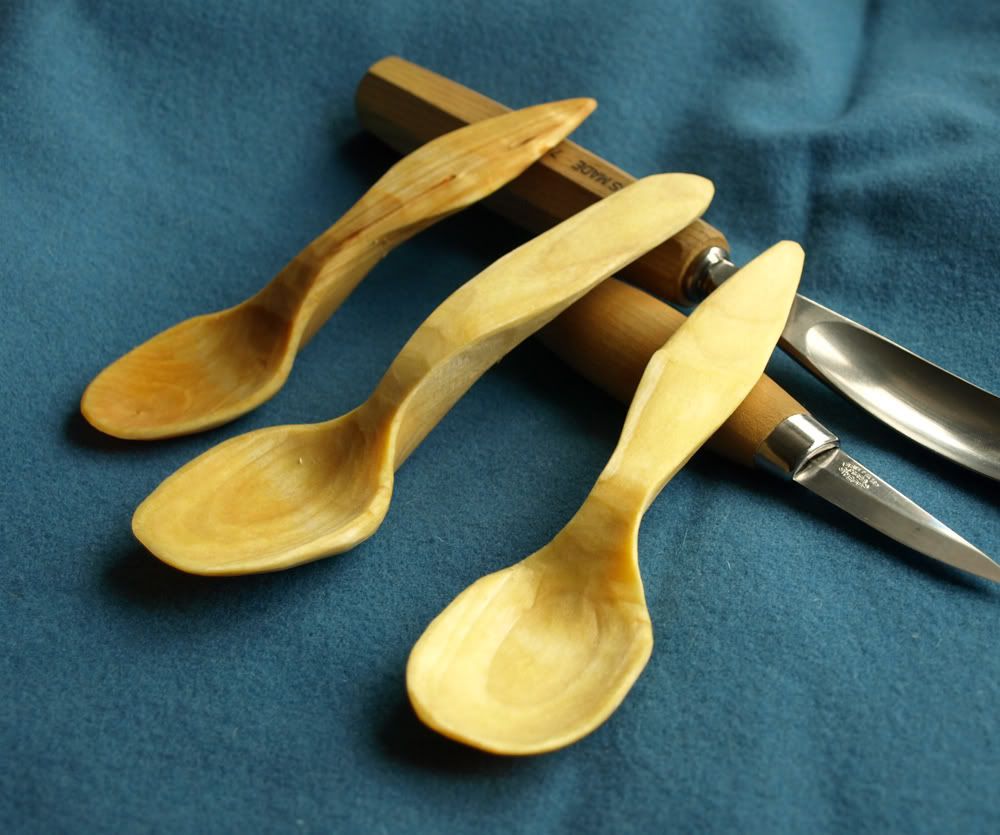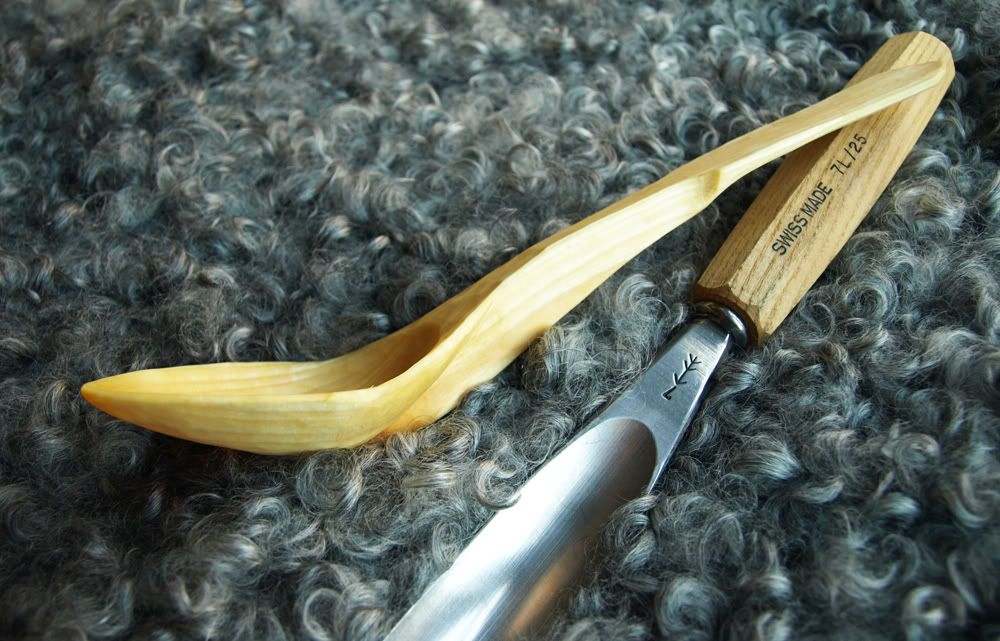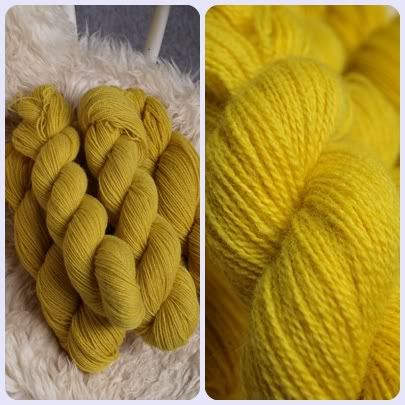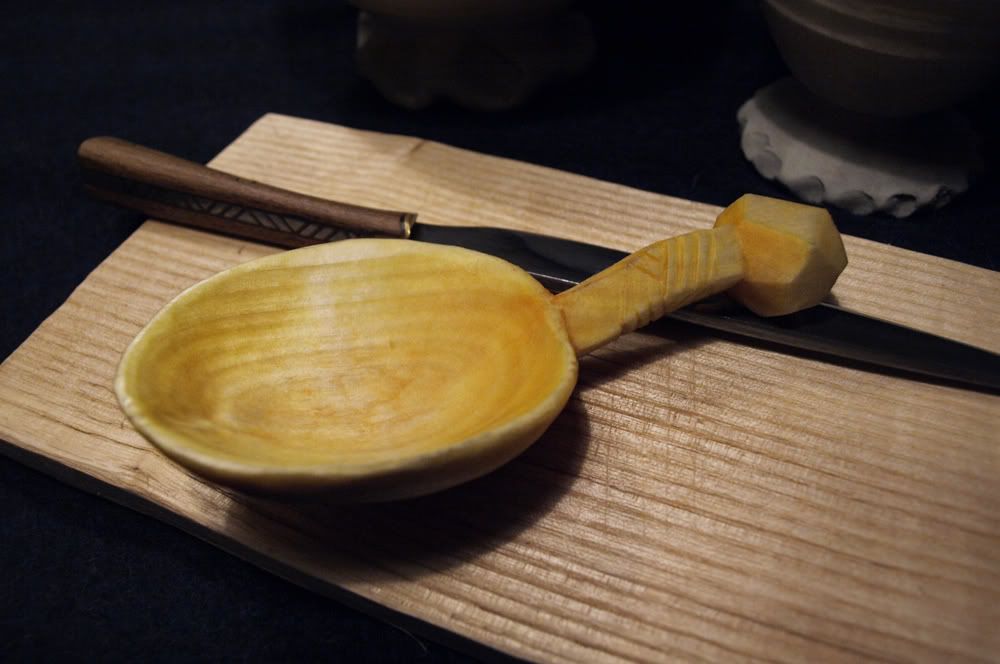Since Louise has now gotten herself a new job in the "viking ages" (At
Bork vikingehavn) I have been thinking more and more about making some viking period stuff. I will of course visit Louise at her new job and do some crafts, so I need new clothes for the right period.
I have not quite decided what to make in terms of clothes, but I am aeking to get to do something. So I made a thing that I will surely need, whatever clothes I might decide to make - A belt.
I have long been facinated by bone buckles from the viking and medieval period, so that is what I have made. That way I could also try to use a new material (bone) and finish an old project that I have been wanting to finish for a long time - the pump-drill that I made last year.
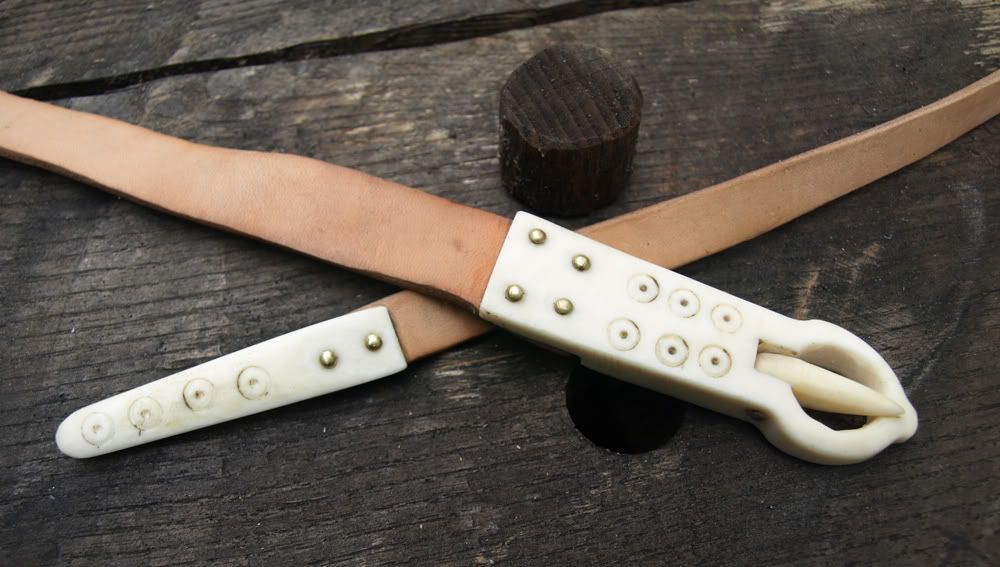
The buckle is made from pieces of pig bone that I had lying around. I sawed the bone into plates and cut out the basic form using a coping saw. The I refined the shape using various rasps and files. The pin is set in place with a piece og brass rod, riveted on both sides of the buckle.
The buckle was then fittet on the belt using brass rivets.
The belt is aproximately 2 cm wide.
I needed the pump-drill to make the cirkle-pattern on the buckle and strap-end, so I made a small drill bit to fit in the pump drill. It turned our like this.
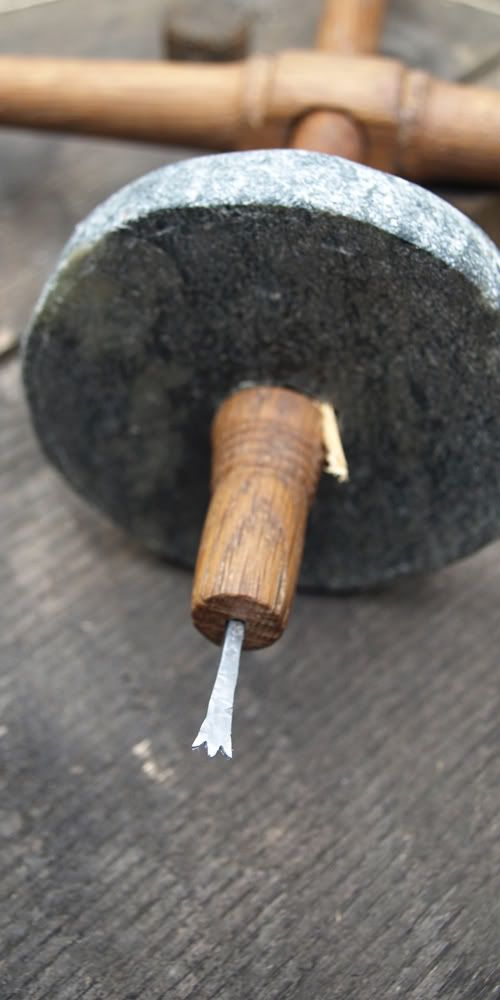
The bit is simply made by hammering flat a steel nail, and then filing out the "teeth". I didn't harden or temper it, but it works great none the less.
The bit is 5 mm wide.
And then there is another viking-related project, that I want to get back to. Since I made the Birka-wallet I have been wanting to make another one. The last was not the correct size and I read somewhere that the braids were done using metal foil rather than leather. So that is what I will try to do this time.
Although I still need to get the exact measurements from the originals (If you have them, I would be very interested in hearing from you! I believe they are in one of the Birka-books).
Here are some experiments I made, using copper foil for the braiding. I think it looks very nice.
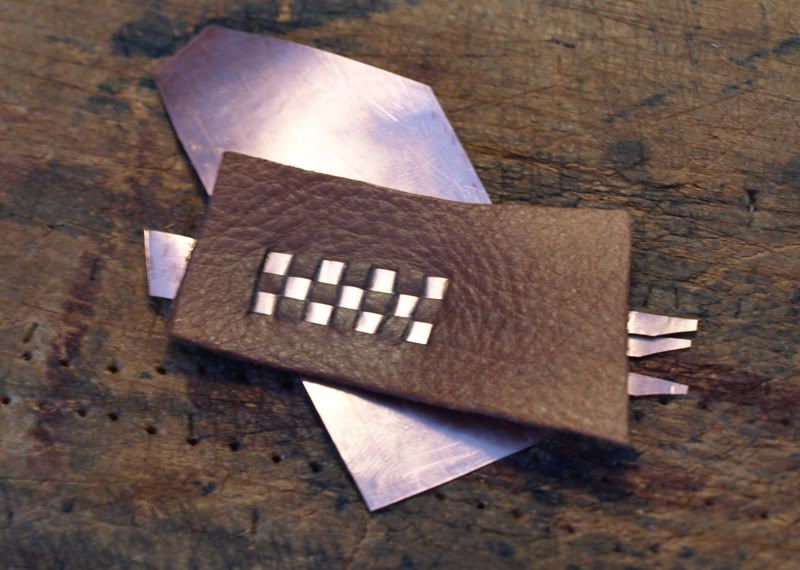
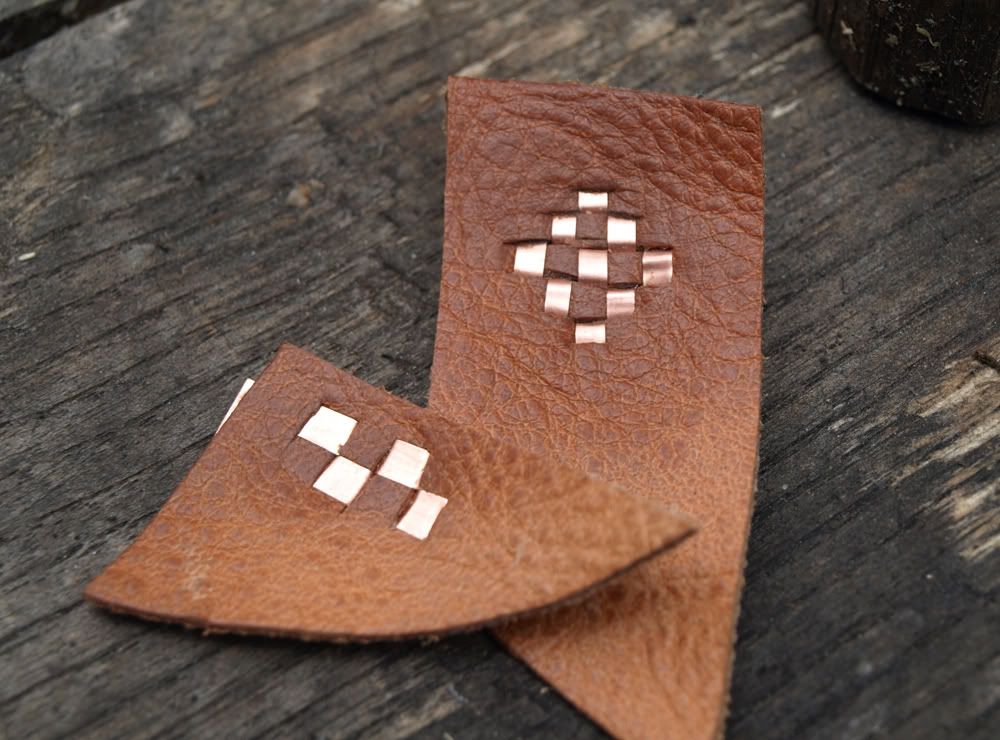
More Viking crafts is yet to come... We are danes after all ;-)


